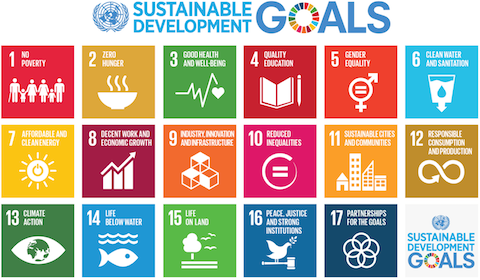“The future of humanity and of our planet lies in our hands. It lies also in the hands of today‘s younger generation who will pass the torch to future generations.”- UNDP
The Sustainable Development Goals (SDGs) also known as Global Goals are a new, universal set of goals, adopted by the UN member states to frame their agendas and political policies to achieve a Planet50-50 by 2030.
The SDGs follow and expand on the 8 Millennium Development Goals (MDGs). The UN conducted the largest consultation program in its history to gauge opinions on what the SDGs should include and in the end, decided on 17 goals and 169 targets
Youth Participation is key to achieving the SDGs
The SDGs are a universal agenda for “transforming our world” and the role of youth will be crucial in achieving these goals. If countries are to succeed, governments must engage young women and men from diverse backgrounds in national-level planning, implementation, and monitoring of the SDGs.
There are more young people in the world now than ever before.
- There are about 8 billion young people between the ages of 10 and 24 – the largest youth population ever. Many of them are in developing countries. In fact, in the world’s 48 least developed countries, children or adolescents make up a majority of the population.
- The number of youth between the ages of 15 and 24 is 1 billion; youth constitute 18 percent of the global population. Youth and children together, including all those aged 24 years and younger, account for nearly 40 percent of the world’s population.
We as youth should actively engage in global efforts to create the world we desire. Unfavorable economic situations, availability of resources, discrimination or lack of information can sometimes hinder our potential. With proper investment in our education and opportunities, our ideas, and innovations can play a pivotal role in achieving the Planet50-50 goals by 2030.
Young people participate have a lot to offer in any journey of transformation. The success of the World Education Forum wherein youth played a vital role in the development of this agenda and in shaping education policy is a great example of how youth involvement can add significantly to the success of any transformational agenda.
Here is what we, the youth bring to the table:
Differentiated thinking: We have the capacity to identify and challenge existing power structures and barriers to change. A great example of this is AHAA – Twenty students, one professor, united for a single cause to spread awareness on prejudice, establish harmony between groups, and promote acceptance of our differences.
Change–makers: We like to mobilize others to bring about a positive change through activism, social movements, and creative expressions. Youth Ki Awaaz amongst many others is one such platform, which shares stories on things that matter.
Unique perspective and participation: In addition to bringing fresh perspectives, we often have direct knowledge of and more insights into issues due to social media. We know how to use it to our advantage. More importantly, we best understand the problems we face and can offer new ideas and alternative solutions.
Natural communicators: We are effective partners in engaging people at the grassroots level. We are good in communicating the goals to a wider audience through innovative ways and channels. Read the stories of 10 young activists who are changing the world.
Empowered young leaders: An empowered youth is knowledgeable about their rights and has the leadership skills, to drive change in their communities. Young people and youth-led organizations need to have space and recognition to participate at the local, national and regional levels. In policy implementation, monitoring and reviewing, and holding governments accountable.
Governments should recognize the value in collaborating with the youth to drive this agenda. With the right commitment and empowerment, youth can fulfill their roles in transforming the world into a better place for all.
If like me, you are keen to be a part of this transformational agenda, here is a good Youth Action Guide on the SDGs by By Ravi Karkara and Rohit Porhukuchi. It provides youth with a simple guide on how to get started under each SDG.
About the Author

Namit Makhija is a grade XII student at Vasant Valley School, New Delhi. Economics and history are the subjects that draw his attention and he wants to pursue them in the future. He is a strong believer of nurturing relationships and calls it the “Art of Human Relations”. A tennis junkie and a weekend cook, Namit is also passionate about making a difference. He strongly believes that involvement of the youth in social and developmental causes is paramount today
Edited by Dr. Shruti Kapoor
